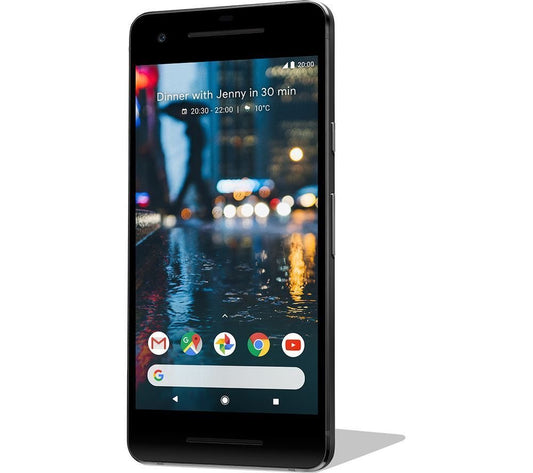Frequently Asked Questions
1. What is cross-promotion?
2. How can I identify ideal partners for cross-promotion?
3. What are some effective messaging strategies for cross-promotion?
4. How can social media be utilized for cross-promotion?
5. Why is analyzing and adjusting strategies important in cross-promotion?
When it comes to driving sales and growing your brand, the right cross-promotion techniques can be game-changers. Leveraging connections and interests across different platforms and audiences can exponentially increase your brand’s visibility. In this article, we’ll explore how to root your cross-promotion strategies effectively for growth.
Understanding Cross-Promotion
Cross-promotion is a marketing strategy where two or more brands work together to promote a product or service. By tapping into each other's audiences, brands can achieve better reach and engagement. It’s a cost-effective way to expand your market while leveraging the trust and loyalty already established with existing customers.
One of the keys to successful cross-promotion is to ensure that both brands’ goals align. The tactics should feel organic and not forced, providing value to both sets of audiences. When executed effectively, cross-promotion can lead to increased traffic, improved brand reputation, and ultimately, higher sales.
Identify Your Ideal Partners
The first step in creating an effective cross-promotion strategy is to identify the right partners. Look for brands that share similar values and possess an audience that connects to your products. For example, if your store focuses on tech products, consider brands that specialize in mobile accessories, like Samsung or related electronics.
Researching Potential Partners
- Analyze Their Audience: Use tools like Google Analytics to understand their demographic and psychographics. Make sure their audience matches your target market.
- Check Engagement Rates: Look at their social media presence. Are they engaging with their followers frequently? This is crucial for a successful cross-promotion.
- Read Reviews: Look into customer feedback about their products or services. Ensure they offer quality that aligns with your own brand standards.
Develop Effective Messaging
Once you have your allies in place, it’s time to curate the messaging. Clarity and authenticity are key. You’ll want to frame the cross-promotion in a way that excites both audiences. This could mean drafting blog posts, crafting social media posts, or even creating promotional materials that showcase the collaboration.
Creating Content That Resonates
Consider utilizing content marketing to build momentum for your collaboration. Craft informative and enticing blog posts or articles. Think about including a Google Pixel 4 review that connects your product seamlessly with the promotional angle. This form of storytelling not only captures attention but also encourages your audience to engage with both brands.
Utilizing Social Media Platforms
Social media is a powerful tool for cross-promotion. Platforms like Instagram, Facebook, and Twitter allow for real-time engagement and reach. Both brands can share promotional content, perhaps showcasing how a Samsung accessory enhances your tech products, thus creating a visual appeal that attracts attention.
Strategies to Maximize Social Media Impact
- Collaborative Giveaways: Host joint contests where participants must follow both accounts to enter. This will increase followers and engagement for both brands.
- Influencer Partnerships: Leverage influencers who embody your brand ethos and those of your partner brands. They can help spread your message effectively.
- Shared Stories and Highlights: Utilize Instagram Stories or Facebook Live to present behind-the-scenes content or a sneak peek of the collaboration.
Influencer Marketing: A Dynamic Duo
Incorporating influencer marketing can genuinely amplify the success of your cross-promotion efforts. By collaborating with influencers that align with both brands, you can reach wider audiences while also benefiting from their established credibility.
Finding the Right Influencers
Look for influencers who resonate with your brand’s mission. Use tools like BuzzSumo or HypeAuditor to find relevant influencers who engage with an audience that fits your discussion areas. Analyze their engagement metrics to ensure they’re effective brand ambassadors.
Analyze and Adjust Strategies
Once your cross-promotion campaign is live, it’s vital to analyze the results continually. Utilize analytics software to track engagement metrics, conversion rates, and overall traffic. Understanding what works and what doesn’t can help refine your approach in real-time and support continuous improvement.
Key Metrics to Monitor
- Website Traffic: Track changes in your site visits. This will help you assess the success of the cross-promotion.
- Social Media Engagement: Monitor likes, shares, and comments on the promotional posts. Engagement is a strong indicator of interest.
- Sales Data: Evaluate how many sales were directly influenced by the collaboration.
Nurturing Long-term Relationships
Building a partnership isn’t just about a single campaign. Evaluate your long-term goals and maintain communication with your partners. Nurturing these relationships can yield even more promotional opportunities down the line and strengthen community ties.
Keeping the Partnership Growing
- Frequent Check-ins: Regularly assess the partnership's performance and check in on how both brands feel about the collaboration.
- Share Insights: Share findings and analytics with your partners. Transparency can strengthen trust and inform future strategies.
- Plan Future Collaborations: Brainstorm new ideas and promotional campaigns to keep things fresh and exciting for both audiences.
Crafting an Engaging Customer Experience
Ultimately, cross-promotion should strive to provide value to customers. Consider the customer’s experience as you co-create content. Use interactive tools, engaging blog posts, or even immersive social media content to keep both audiences engaged.
Leveraging Customer Feedback
Encouraging feedback can be a key differentiator. Host surveys or polls to gauge customer satisfaction regarding the promotion. Using this feedback to adjust your strategies can further root your techniques for better results in the future.
By embedding your cross-promotion techniques deeply into your strategy, you not only foster growth but also strengthen relationships between brands and audiences. With careful planning, research, and continuous adaptation, your business will not only flourish but also stand the test of time in an ever-evolving marketplace.








